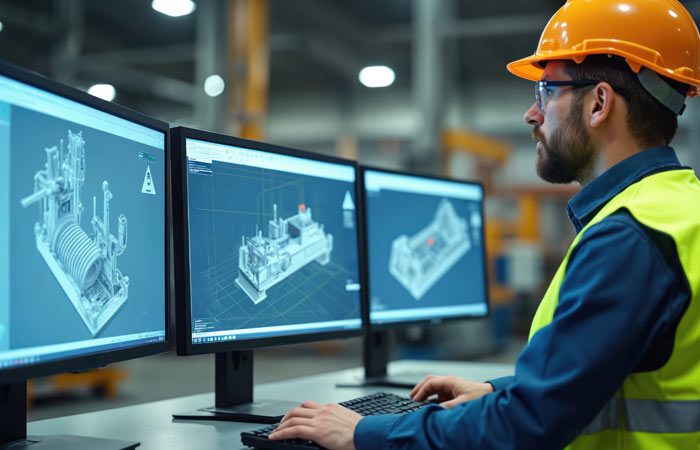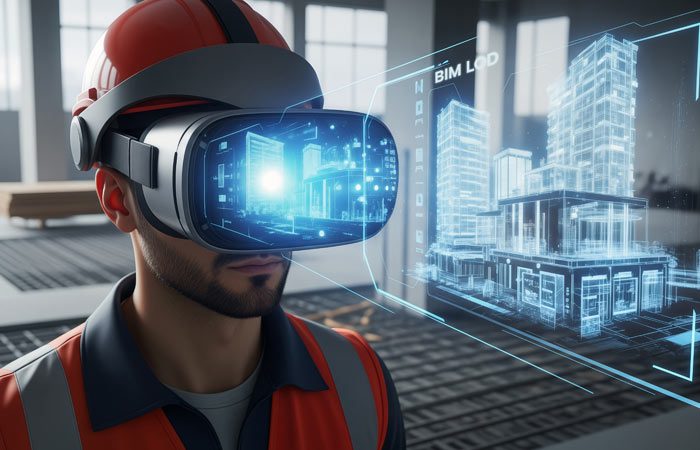
Digital Twin & Virtual Reality in Cabin Design: Engineering the Passenger Experience of the Future
Aircraft interiors have always been the emotional core of aviation design. While the aerodynamic body defines performance, it’s the cabin that defines the journey — a microcosm of comfort, technology, and safety that must coexist within the strictest engineering and certification boundaries. In recent years, digital twin in aircraft cabin design and virtual reality cabin design have reshaped how OEMs, airlines, and engineering partners conceptualize and deliver this experience. Together, they represent the perfect confluence of imagination and intelligence — where design precision meets immersive visualization.
The Shift from Physical Prototypes to Virtual Precision
Traditionally, cabin design involved extensive cycles of mockups, reworks, and physical testing — a costly and time-consuming process. Every change to the galley layout, seat monument, or overhead bin had to be validated physically, often after multiple iterations. The rise of the aircraft cabin digital twin has transformed this paradigm.
A digital twin is a virtual replica of the cabin’s physical environment, dynamically linked to real-world data. It allows designers, engineers, and certification teams to simulate the entire lifecycle — from conceptual design and integration to operation and maintenance. When paired with 3D modeling and simulation for aircraft interiors, the digital twin eliminates guesswork, enabling engineers to analyze spatial relationships, lighting, airflow, and even passenger ergonomics in a completely virtual environment.
By creating a high-fidelity virtual model that mirrors every design and engineering parameter, teams can identify issues long before production begins. This results in reduced lead times, minimized rework, and improved design integrity — outcomes that are invaluable in a cost- and schedule-driven industry.
The Rise of Virtual Reality in Cabin Design
If the digital twin provides data accuracy, virtual reality for aircraft interiors provides design intuition. Using immersive headsets and visualization tools, design teams can “walk through” the aircraft cabin months before the first physical prototype is built. This is the essence of virtual reality cabin design — the ability to inhabit a yet-to-be-built space and experience it from the passenger’s perspective.
Through 3D visualization in aircraft cabin design, stakeholders can explore everything from aisle spacing and seat recline clearance to galley accessibility and crew workflow. For airlines, this means faster decision-making and the ability to tailor cabin aesthetics to brand identity before committing to tooling or certification costs. For engineers, it offers a dynamic feedback loop — every adjustment made in VR can instantly be validated against the digital twin for structural feasibility and regulatory compliance.
In essence, virtual reality transforms design from a 2D blueprint process into a 3D, sensory-rich collaboration.
Merging Digital Twin and VR: The Future of Cabin Design Engineering
The real power lies not in either technology alone, but in their integration. When a cabin interior engineering model built using the digital twin framework is visualized in virtual reality, it becomes an interactive engineering ecosystem. Designers can manipulate geometry, test lighting effects, simulate material textures, or even run “what-if” safety scenarios — all within a virtual cabin space that mirrors real-world physics.
This integrated approach represents the next frontier in cabin design engineering services. It allows multi-disciplinary teams — structures, systems, human factors, and certification experts — to collaborate in a shared digital environment. For instance:
- Ergonomic Simulations: Through virtual reality for cabin layout and ergonomics, engineers can analyze seat-pitch variations, crew reach zones, and passenger ingress/egress in real time.
- System Integration: Using the aircraft interior design using digital twin, teams can evaluate how electrical, pneumatic, and environmental control systems interact within confined spaces.
- Certification Readiness: Material flammability, emergency lighting, and evacuation simulations can be virtually tested before physical trials, ensuring compliance with FAR 25.853 and other regulatory standards.
- Sustainability Insights: Digital twins enable performance simulations that assess material efficiency, energy consumption, and recyclability across the cabin lifecycle — supporting the growing demand for eco-efficient aerospace solutions.
Together, VR and digital twins bridge design intent with execution — ensuring what’s visualized virtually is certifiable, manufacturable, and maintainable in reality.
Beyond Visualization: The Business Impact
Beyond design optimization, these technologies are redefining the economics of aerospace interiors. Virtual prototypes cut development costs by reducing the need for physical mockups and travel between teams. Iteration cycles become faster, as engineers and designers can co-review configurations remotely through collaborative VR environments.
Moreover, once the aircraft enters service, the smart cabin engineering using digital twin approach enables predictive maintenance. Sensors embedded within the cabin feed operational data back into the digital model, allowing operators to anticipate wear, plan maintenance, and enhance passenger comfort dynamically. This feedback loop transforms cabin management from reactive to proactive, improving both uptime and user experience.
Human-Centered Design Through Immersive Engineering
Cabin design is not merely about structural layout; it’s about emotion, perception, and usability. Passengers today expect quieter cabins, smarter lighting, touchless interfaces, and more personalized spaces. The integration of VR for aircraft interiors empowers design teams to test these human interactions under simulated operational conditions — from lighting transitions during takeoff to the movement flow of passengers during boarding.
This human-centered design approach ensures that every inch of the cabin — from window placements to lavatory layouts — resonates with comfort and efficiency. Engineers can also validate accessibility features, ensuring inclusivity and compliance with emerging global design standards.
Challenges and Evolving Best Practices
While the benefits are clear, adopting digital twin in aircraft cabin design and VR tools requires careful implementation. Data consistency, cross-platform integration, and cybersecurity become critical factors when digital twins interface with live data from multiple suppliers. Likewise, creating photo-realistic and physics-accurate VR environments demands significant computational resources and skilled 3D artists who understand both design and aerostructural engineering.
To address these, leading aerospace engineering services for cabin design providers are standardizing digital workflows — ensuring interoperability between CAD, PLM, and visualization platforms. They’re also investing in AI-driven optimization, where machine learning algorithms suggest geometry improvements or material substitutions based on simulation feedback.
TAAL Tech’s Role in the Transformation
Among the frontrunners driving this evolution is TAAL Tech, an established engineering and digital solutions provider known for its deep domain expertise across aerospace interiors, structures, and systems. Leveraging cabin interior engineering with VR and digital twin, the company helps global OEMs and Tier-1 suppliers shorten development cycles, reduce certification risk, and create immersive, passenger-first designs. TAAL Tech’s integrated approach blends engineering rigor with digital creativity — ensuring that the cabins of tomorrow are not only beautifully designed but digitally validated and operationally intelligent.
The Road Ahead
The integration of digital twin and virtual reality in cabin design signals the dawn of a new era in aerospace innovation. It’s a move from “designing for compliance” to “designing for experience.” As data, simulation, and immersive visualization converge, cabin design will no longer be an isolated stage but a continuous, intelligent loop — where insights from the digital twin refine design, and VR ensures those refinements resonate with human experience.
In this new paradigm, aircraft interiors are not just built; they’re engineered, simulated, and lived — virtually first, and then flawlessly in flight.


